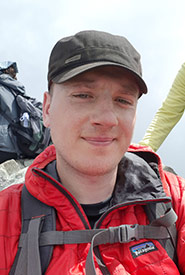Canada in bloom: Rare treasures of Strathcona Provincial Park
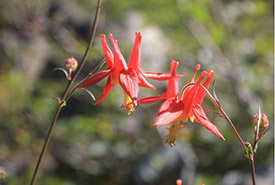
Western columbine from Strathcona Provincial Park (Photo by mspringle, iNaturalist, CC BY-NC 4.0)
As a keen hiker, I spend much of my time gazing in wonder at some of the incredible views on offer across Canada’s magnificent hiking trails. From the awe-inspiring, snow-capped peaks of the Rockies, to the rugged coastline of western BC, it can be hard to tear my eyes away from this spectacular, vast landscape.
Yet, ironically, sometimes we hikers forget to pay attention to what’s going on by our feet!
The trail floor often conceals a surprising array of miniature wonders, including delicate alpine flowers, unusual insects and vibrant mosses. For this reason, I decided to go in search of some of Canada’s most beautiful and often overlooked natural treasures in BC's Strathcona Provincial Park.
Related content
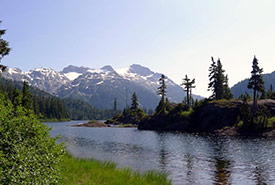
Bedwell Lake, Strathcona Provincial Park, BC (Photo by Lukas Saville)
Strathcona Provincial Park covers almost 250,000 hectares (617,763 acres) on Vancouver Island. It is known for its stunning alpine peaks, lakeside hiking trails and unique flora and fauna. The physical isolation of the island has given rise to several unusual types of plants and animals, which have evolved differently from their counterparts in the rest of North America. It’s possible to see the critically endangered Vancouver Island marmot and, if you’re lucky, the elusive Vancouver Island wolf, but on this occasion, I was on the hunt for some of the park’s rarest flowers.
My week-long backpacking journey began at the aptly named Paradise Meadows, the main access point to the Forbidden Plateau, which is famous for its hiking trails. Set against a backdrop of snow-covered peaks, the boardwalk path meanders around several lakes. I suddenly found myself surrounded by hundreds of varieties of flowering plants. Perhaps the most beautiful of these was crimson columbine — brightly coloured, delicate and noted for its geometric shape. I also spotted northern starflower, Indian paintbrush, bell-shaped false azalea, and, further along the trail, vibrant red huckleberries and dwarf blueberries.
As I stopped for a quick break, I could hear the distinctive whistle of a Vancouver Island marmot, who seemed to be enjoying the scenery as much as I was.
Ascending the Forbidden Plateau Trail, I stumbled across a grove of yellow cedar. These beautiful, ancient trees clung to the steep hillside, contorting their trunks in an attempt to stay vertical. Yellow cedars are flourishing in Strathcona, but elsewhere in western North America some populations are dwindling due to the effects of climate change.
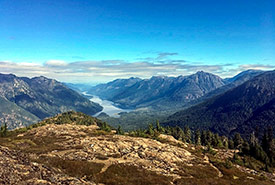
Flower Ridge overlooking Lake Crema, Strathcona Provincial Park (Photo by Lukas Saville)
Another day, another trail, and this time I was headed for the glorious Flower Ridge Trail, an epic hiking route with plenty of floral surprises along the way. The route starts at Buttle Lake and is surrounded by grassy meadows filled with tall daisies and often frequented by black-tailed deer. The trail ascends steeply over the first six kilometres, through ancient forests carpeted with rich mosses.
From Buttle Lake right to the end of Flower Ridge, I managed to observe some incredible examples of Strathcona’s flora. The views of the nearby mountains were spectacular, but the dance of colours, shapes and textures around the rocky trail floor was simply gorgeous. A carpet of wild, vibrant heather surrounded the ridge, and the trail was punctuated by moss campion, monkey flower, violet and many more varieties of wildflowers.
Perhaps the most distinctive sights along the way were the clusters of krumholz, stunted trees that have twisted into strange and unusual shapes as a result of the harsh growing conditions at higher elevations and the strong winds. The variety of flowers, plants and trees along this route and around the park was simply staggering.
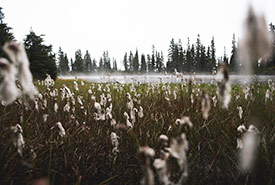
Strathcona Meadows, BC (Photo by Unsplash, Joel Cross)
The flowers, plants and trees of Strathcona Provincial Park are beautiful natural treasures in their own right and are a compelling reason to visit the region. However, they are also a crucial component of Vancouver Island’s unique ecosystem and sustain a wide variety of animals. Wherever you find alpine flowers, you’ll also find a startling array of butterflies, bees, dragonflies and other insects. In turn, these sustain some of Strathcona’s rarest birds, including Vancouver Island white ptarmigan. The diversity of this fragile, interconnected ecosystem is simply a marvel to behold.
So next time you’re out on the trail, tear your eyes away from the magnificent mountain vistas, and take a moment to admire some of nature’s small and delicate wonders near your feet!

